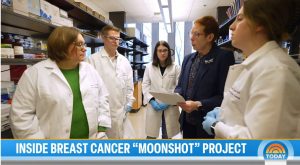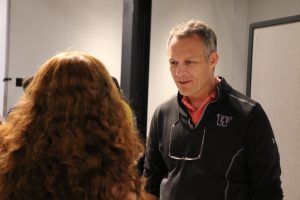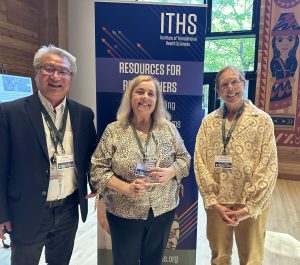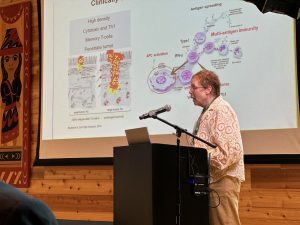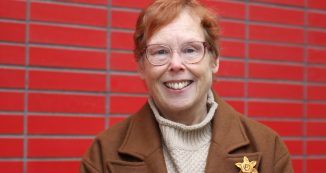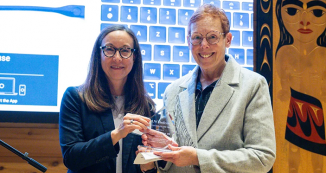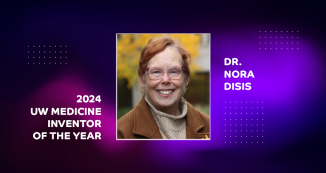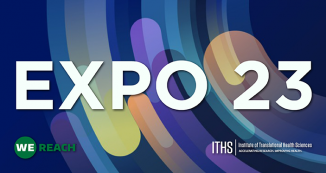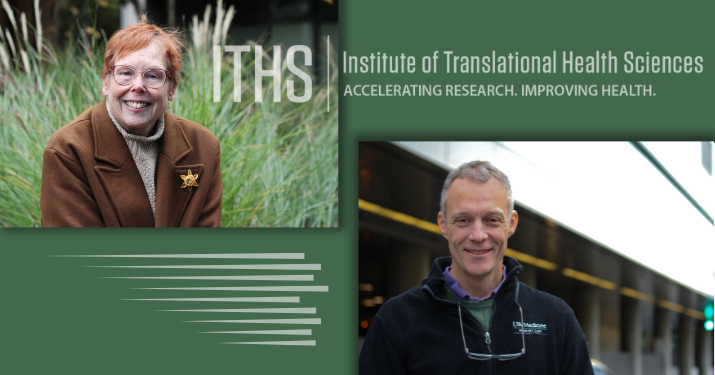
22 Feb ITHS Interview: What’s next for Dr. Nora Disis
Dr. Mary “Nora” Disis, famed translational researcher and pioneer in vaccine science, is stepping down from her position as Principal Investigator at the Institute of Translational Health Sciences. Stepping into the role is John K. Amory, MD, MPH, MSc, Professor of Medicine and Section Head of General Internal Medicine at the University of Washington Medical Center.
What motivates this professional shift is her work at the Cancer Vaccine Institute. Dr. Disis is an expert in breast and ovarian cancer immunology, and her research interest is in developing vaccine and cellular therapy for breast and ovarian cancer. She holds several patents in the field of targeted cancer therapy, and has made many notable strides in this area in the last few years. This is great news for the field of cancer immunology, with enormous potential for advancing human health.
ITHS recently sat down with Dr. Disis to understand more about what’s behind this career change, how she plans to stay connected to her research roots, and what she sees as the future for translational science.
We know that you’re about to embark on a significant transition from your role as PI at the Institute of Translational Sciences, a research hub you helped create. What’s motivating you to pursue this transition – and where are you headed?
It is a very significant change, and I do not do it lightly. When we received that first grant in 2006, my focus was on shaping ITHS into an inclusive research hub that would serve the WWAMI region. But while that work has been going on, I’ve had this other “day job” at the Cancer Vaccine Institute (CVI). I have split my time working at ITHS while also helping the CVI grow and thrive. We have made several significant advances in the world of cancer immunology, specifically around breast and ovarian cancers but others as well. And now, it has gotten to the point where I’ve got to go back to the lab. This is great news, because right now we’re on a significant launch pad with a few of these major projects. To be successful and move forward in the right way, these projects need my undivided attention. It’s too much to do both jobs at once, so one had to go. Although I love ITHS, my heart is in vaccine development and right now it requires my laser focus.
What can you tell us about Dr. John Amory, the new PI for ITHS?
There are two main reasons this is going to be successful. One, Dr. John Amory has been with ITHS since the beginning, and he knows everything about ITHS. He’s a leader in the KL2 program and has been on the leadership team since the beginning, so it’s a very smooth transition with him. Two, the way the ITHS works is that no one ever leaves. That includes me – so I’m not quitting, just stepping back. I will continue to advise John, still playing a role within the Translational Resarch Unit.
He really is well-positioned to take on the new role: he received his undergraduate degree from Harvard and his MD degree from UC San Francisco, where he also completed his residency in Internal Medicine. Additionally, he has a master’s degree in public health and a master’s degree in pharmaceutics from the University of Washington. He has also published more than 175 peer-reviewed papers and chapters in the area of male reproductive health. He makes a lot of sense as the new leader as the ITHS heads into another renewal.
And I have to say I think that you’ll like John more than you’ll like me (laughter). He’s very polished, well-spoken, very compassionate and caring, especially going through the process of writing the grant. The people who didn’t necessarily appreciate my frankness – they’ll love John. He’s a gentle soul. I’m more rough and tumble and John is more the elder statesman. I’m more rambunctious, so I think he’s perfect, great for this time in the ITHS story. The timing really feels right to take this leap.
You’re leaving ITHS in great hands, that much is clear. When you think about some of the things you’re most proud of achieving with ITHS, what comes to mind?
First, when I started in ITHS, the day we got the grant in 2006, the head of NCRR, Dr. Barbara Alving, called me. She said “OK, Dr. Disis, you got this grant, and you have this thing called the WWAMI region. What do you know about that? What’s your plan for outreach? Do you know about grants to get more RO1 investigators in more rural places?” Her passion for extending the power of the CTSA is what kickstarted me into learning more about the WWAMI region. Soon after, we planned a big meeting with all vice deans of research to come to Seattle to talk about the CTSA program, and naively I thought it would be so peaceful – a constructive meeting of the minds. I was wrong: It was tense, full of legitimate grievances about how things had been running up to that point. It was a humbling reminder that there’s a lot of valuable work from other places that hadn’t been acknowledged. That was a significant lesson for me about how you have to create relationships if you want to be successful in this field. It has taken me 15 years at ITHS to finally develop those relationships, to develop bidirectional programs across WWAMI that are bringing us research. The result is that our students and our faculty benefit from what’s happening in Spokane, Montana, Idaho, and beyond. Finally seeing that come to fruition, finally understanding the excellence and outstanding research that’s happening in the PNW, in the regional partners and to truly call them partners, is a great legacy. I don’t think I could have stopped being PI without seeing that happen. I feel like the right people are in place and the work is finally happening in the right way.
Second, years ago, the CTSA program at NIH struggled to find a vision. So in the first days of ITHS, it was hard to be part of a centralized program with so much turmoil. However, I felt that ITHS as a group always had a very clear vision of who we were and what we were going to achieve due to the strong partnership we had across all schools at the University of Washington: School of Medicine, Public Health, Nursing, Dentistry, Pharmacy, Social Work. And key to that partnership was the great leadership at those schools and at Fred Hutch and Seattle Children’s. Those leaders who started with us have stayed with us the whole time. That longevity and consistency of ITHS as a confluence of these institutions is why we are known as the best in the nation. That’s straight from the horse’s mouth: NCATS has told us that, so we are very proud of leaders for leaning into the partnership and reaching that height for us.
Third, the goal of the PI is to get the grant. That’s the major role of the leader of the institute, and at ITHS, we got the grant every year I was PI. We never even had to re-apply for it, which is rare for any CTSA. Everyone kept their job, and I’m proud of that.
You are a beloved fixture at ITHS and nationally respected in the field of translational science. With this transition, how do you plan to stay connected to your research community?
That’s a very good question. I hope to stay connected by keeping both feet in the institute as an investigator and as someone who is working within institute programs, just not as PI. I want to keep critical connections in place that make programs flourish. That’s what’s going to keep me active within ITHS.
I’m lucky to have a wonderful example in Dr. Laura-Mae Baldwin, who is retired from her practice, but still acts as a senior advisor to the ITHS WWAMI Region Practice and Research Network (WPRN). So she has stepped down from her leadership role but has still stayed really connected to her research community, and I want to emulate that. I have enjoyed meeting so many people in the WWAMI region, connecting and mentoring junior investigators regionally and locally. It’s because of these connections that now, a lot of our work has now expanded beyond the scope of cancer research into auto-immune diseases, diabetes, gut-microbiome, and more – all stemming from collaborations I’ve made through ITHS. That’s the beauty of translational science itself. So yes, I will be making a concerted effort to preserve these connections when I take on this new role.
You’ve worked alongside translational science luminaries like Bonnie Ramsey and Laura-Mae Baldwin for decades in the WWAMI region, and you’ve all left an indelible mark on this field—you continue to do so. What are some common traits that the three of you share to help you be as successful as you’ve been?
First, I think we are all very curious, which is necessary in order to be successful. You have to be open to a wide number of disciplines, willing to learn a lot about a lot of different things. Second, you have to know that you don’t know everything! So you should feel empowered to ask about it. A lot of times in this work you’re deep in the process of developing something and you have to take it to the next step, and the next, and the next, and you get to a point where you don’t know which step to take next! No one knows the whole pipeline. So you have to ask for help. Be open to asking for help. Finally, you need to be someone who can develop a dynamic team that works well together. No one person can develop something alone. So you have to be a leader, a mentor, and treat people well. They have to be excited to work with you if the team is going to work. I think those are the common threads for success.
What does the future look like for ITHS?
The future has always been bright for us, but I think the biggest challenge will be adapting to the direction that NCATS is going to set for the CTSA programs nationally. In the beginning, translational science was only one thing: bench to bedside. Now, it looks very different – and that’s exciting. There’s so much more focus on the impact of our work on human health. Our field is also becoming more community-facing than lab-facing. I think that’s exciting and opens translational science to so many more opportunities and allows for a reinvention of sorts. This evolution also challenges us to look at our own internal workforce to see if we have everyone we need at the table as we reinvent what that new vision is going to be. These are all great reasons for ITHS to have a new leadership perspective, so it can meet those emerging needs.
What advice do you have for researchers who want to emulate some of your accomplishments and who look to you for inspiration?
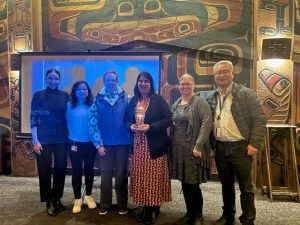
Dr. Disis with Sandra Linde, winner of Carlos De La Peña award for Translational Science Excellence, 2023
My advice is, you have to figure out what you’re passionate about. Stay focused. In research, lots of people have a hard time and aren’t successful as they want to be in the beginning of their careers. When I started in research, one characteristic I saw in people who were met with disappointment was a lack of focus. They were easily distracted when they didn’t get the result they wanted. They got caught up in other projects if something new came along, or they’d divert resources into doing other things.l keep my eye on the ball. Research is hard and you must have failure to figure out what works and doesn’t work. Try to solve the big problems in your field that are going to result in big gains.
The most important thing is: if you don’t love it, you won’t be able to make it in research. Because you’re not going to get every grant, get every paper published, have every experiment be perfect. There are lots of negatives in research like in every field, so unless you love the discipline and the people…Be passionate because it’s a long haul. Try to answer big questions. You’re in research to change the world, so make that your big, hairy goal, to change the world.
Is there anything I haven’t covered that you want ITHS members to know?
Just that you’re in great hands, and I’ll still be very much in the picture for ITHS in the future. What I would like our audience to know is this: this ITHS has been around for 15 years and we are completely integrated into UW Medicine and Children’s and we’re providing a lot of the resources that you probably use every single day. And one of the things that keeps us going and funded, is when you guys cite us for being responsible for your publications. Please remember to cite ITHS grants when you publish your papers when you’ve used any ITHS resources to support your work, all the information you need is here.
Read more about Dr. Disis’ cancer vaccine work here.
# # #
Dr. John Amory assumes his new role as ITHS principal investigator on March 1, 2024.




